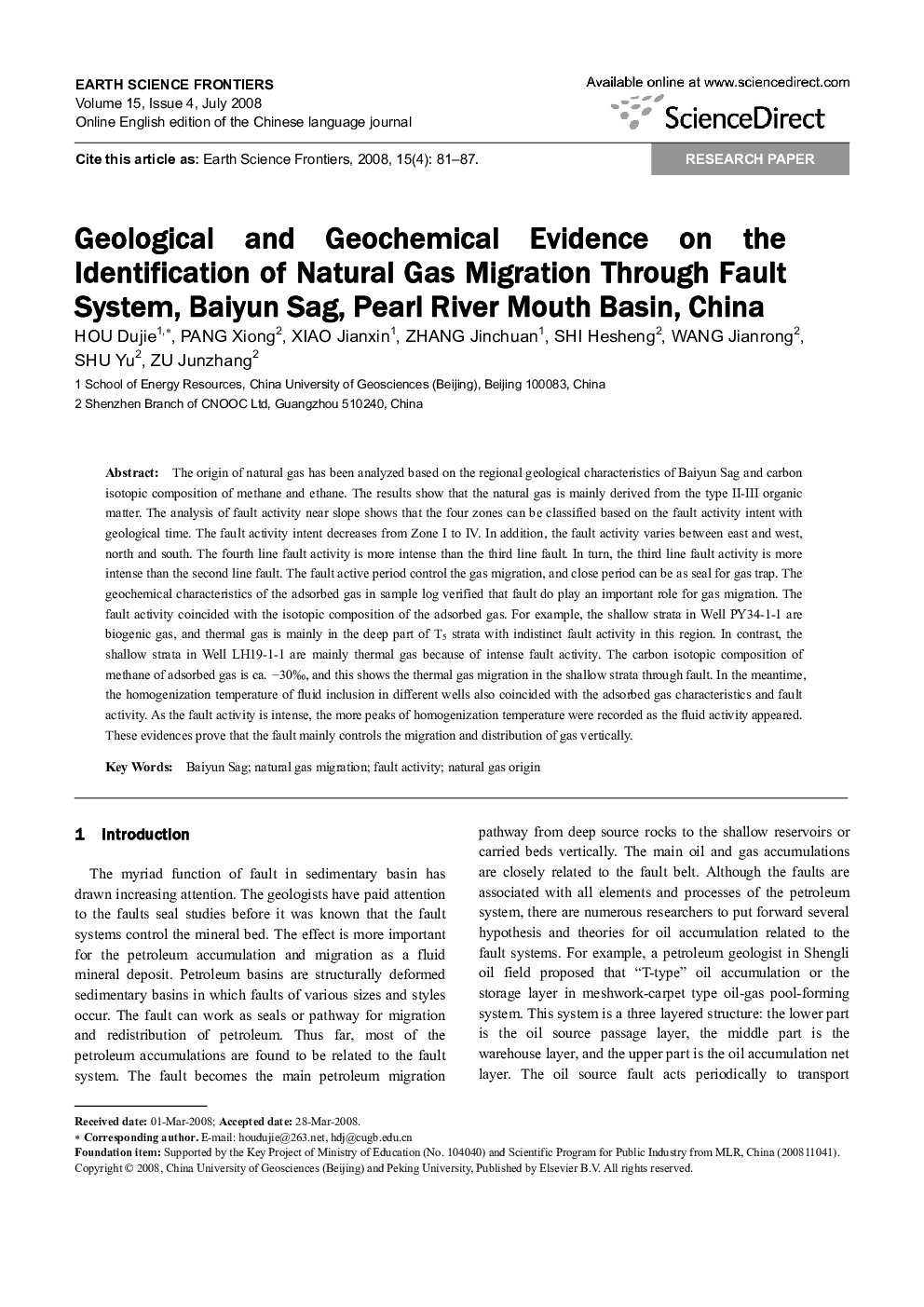| Article ID | Journal | Published Year | Pages | File Type |
|---|---|---|---|---|
| 4701615 | Earth Science Frontiers | 2008 | 7 Pages |
The origin of natural gas has been analyzed based on the regional geological characteristics of Baiyun Sag and carbon isotopic composition of methane and ethane. The results show that the natural gas is mainly derived from the type II-III organic matter. The analysis of fault activity near slope shows that the four zones can be classified based on the fault activity intent with geological time. The fault activity intent decreases from Zone I to IV. In addition, the fault activity varies between east and west, north and south. The fourth line fault activity is more intense than the third line fault. In turn, the third line fault activity is more intense than the second line fault. The fault active period control the gas migration, and close period can be as seal for gas trap. The geochemical characteristics of the adsorbed gas in sample log verified that fault do play an important role for gas migration. The fault activity coincided with the isotopic composition of the adsorbed gas. For example, the shallow strata in Well PY34-1-1 are biogenic gas, and thermal gas is mainly in the deep part of T5 strata with indistinct fault activity in this region. In contrast, the shallow strata in Well LH19-1-1 are mainly thermal gas because of intense fault activity. The carbon isotopic composition of methane of adsorbed gas is ca. −30‰, and this shows the thermal gas migration in the shallow strata through fault. In the meantime, the homogenization temperature of fluid inclusion in different wells also coincided with the adsorbed gas characteristics and fault activity. As the fault activity is intense, the more peaks of homogenization temperature were recorded as the fluid activity appeared. These evidences prove that the fault mainly controls the migration and distribution of gas vertically.
